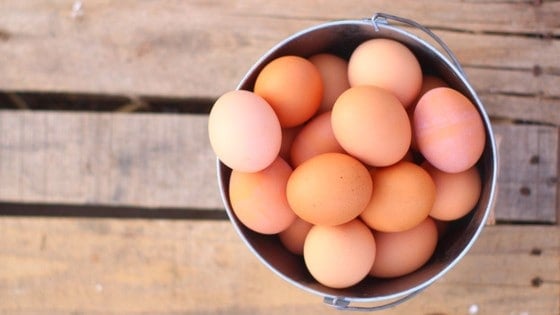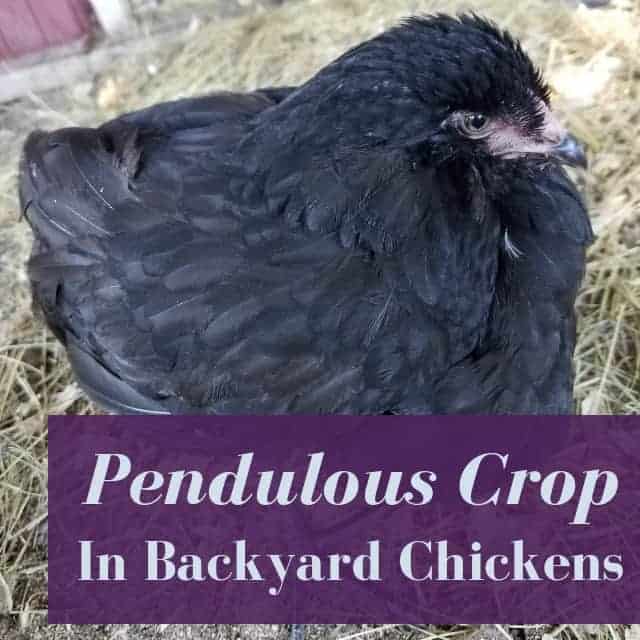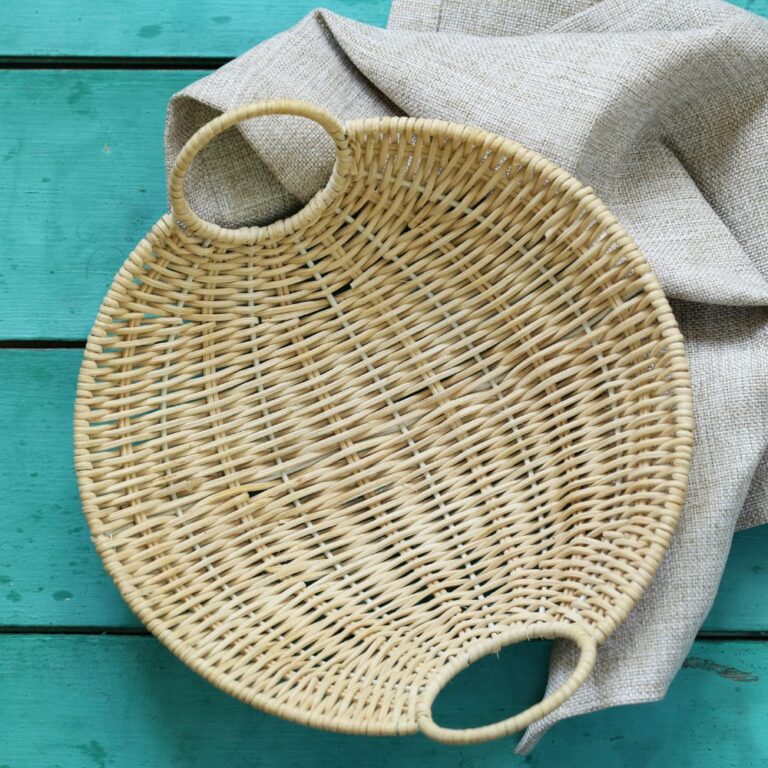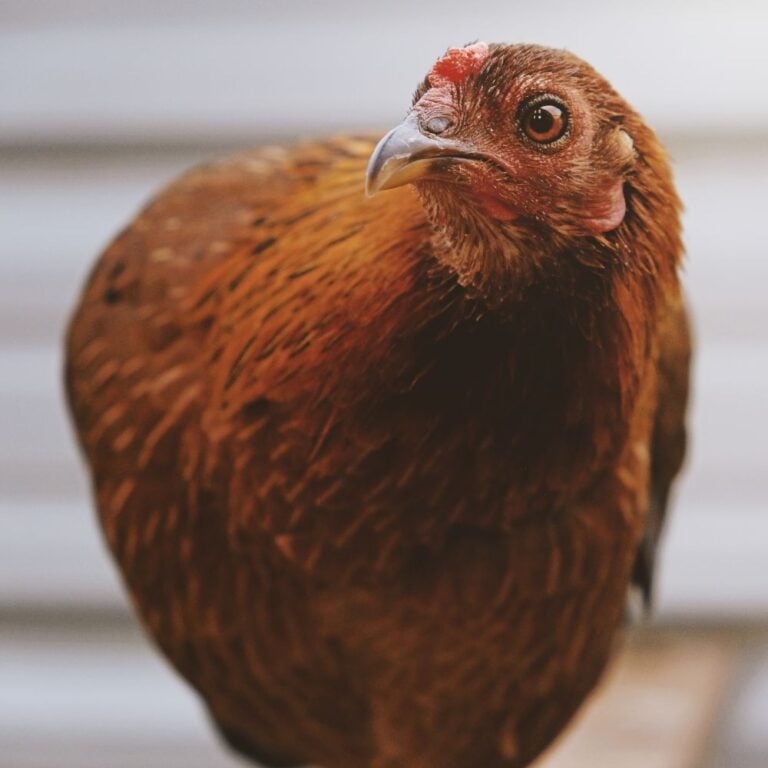There are so many chicken breeds out there today that it may be easy to overlook this fast-growing heritage breed. New Hampshire chickens often get confused with the Rhode Island Red breed, which doesn’t help.
But New Hampshire chickens shine bright when it comes to being a great meat producer that also lays a good amount of eggs. New Hampshire chickens were crossed with Rhode Island Reds, which is part of the reason they look a lot alike.
Rhode Island Reds have stolen the spotlight over the years much like the older, prettier sister can do. But if you take a closer look at New Hampshires, you may scratch your head in wonder over this overshadowing.
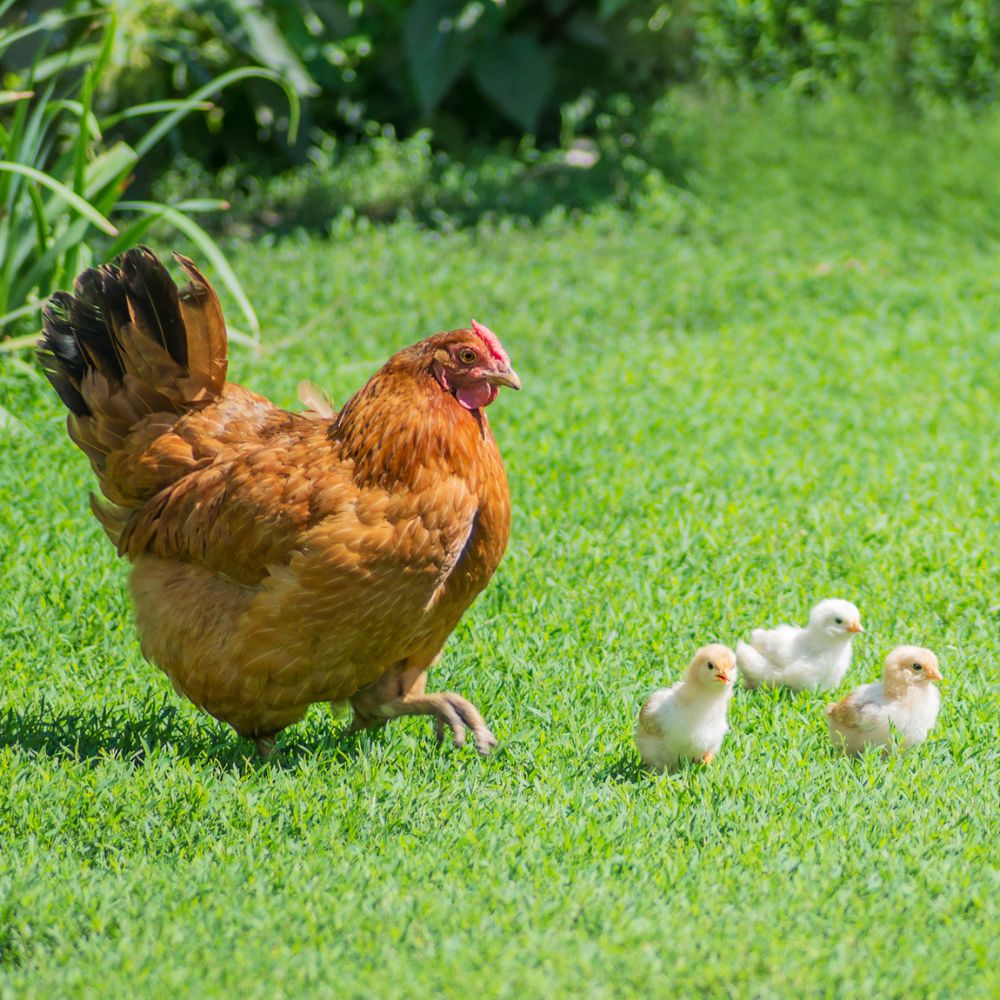
Table of Contents (Quickly Jump To Information)
Why Should You Want New Hampshire Chickens?
To fight for the underdog (uh hum…underchicken)! I love a good underdog success story, and the New Hampshire breed is a perfect candidate. Being overshadowed by the prettier big sister (Rhode Island Reds), the New Hampshire breed has a hard time getting their job skills out there for prospective owners to see.
So how do they shine? Well, for starters New Hampshire chickens mature faster than Rhode Island Reds (and many other breeds). They are also known for being a little more docile and friendlier that Rhode Island Reds.
Don’t get me wrong, Rhode Island Reds are good chickens too. But this post is dedicated to getting the word out about the “underchicken.”
History Snippet of the New Hampshire Chicken Breed
Why only a history snippet instead of a full history lesson? Simply because the history is short and sweet. The Livestock Conservancy says it best:
The New Hampshire is a relatively new breed, less than 100 years old. It was developed in New Hampshire and Massachusetts and is a separate strain of the Rhode Island Red. In the early 1900s, New Hampshire poultry breeders began to select hens from Rhode Island Red strains that feathered, grew, and matured faster. The breakthrough in the creation of this breed was made by Professor “Red” Richardson, who was working at an Agriculture Experimentation Station at the time.
Basically, this breed was created by an intensive selection of Rhode Island Reds. After a lot of refinement, the breed was admitted to the American Poultry Association as its own separate breed in 1935. They are a heritage chicken breed.
Chicken of Tomorrow Contest
Have you seen the documentary “Chicken of Tomorrow?” Probably not, but it is fun to watch. I will give a fair warning, it was made in 1948 and that shows in many ways (in film quality and content). Regardless, it’s pretty interesting and worth watching.
I mention this documentary because New Hampshire chickens were entered into the National Chicken of Tomorrow Contest.
The world was changing rapidly — with the aftermath of World War II, along with the Baby Boom era, there was a great need to find a way to produce fast-growing high-protein meat. That’s when the broiler industry flew into action.
The country’s largest poultry retailer at the time, the Great Atlantic & Pacific Tea Company, created a competition to encourage breeders to create a chicken breed that could meet the demand. They offered a $10,000 prize — even today, that amount would be enticing.
The New Hampshire breed didn’t place first in the contest but it also did. Wait, read that last sentence again. It’s not a typo. You see, the breed did get noted for “best feathering.” But better than that, the grand prize winner was the result of Red Cornish males crossed with New Hampshire females!
In my award book, that makes the New Hampshire breed a clear winner. You can’t deny this was a big deal for the breed.
That wasn’t the only time New Hampshire chickens have shared the spotlight with another breed. Barred Rocks were crossed with New Hampshires to create the Delaware breed, which was once a top choice for broilers and for eggs.
New Hampshire Chicken Temperament
New Hampshire chickens are super friendly and docile which guides their daily behavior. They truly make great family pets. I’ve had a good experience with this breed in my own personal flock.
In fact, we named one of ours “Daddy’s best friend” because it followed my husband around all day. He was building a shop on our property and that sweet bird tagged along like an apprentice training on the job. My husband shared his lunch with his little feathered buddy on a daily basis and truly enjoyed the friendship.
They can be broody and are excellent mamas. The fact that they are good mothers is a plus if you want chicks, but don’t want to do all the work (or don’t have the time) of incubating and brooding them artificially.
Although they are very friendly, many of them do have one teeny tiny issue. Nothing in this world is perfect, right? Well, this breed tends to be food aggressive. They like their food and they are willing to arm wrestle (or wing wrestle) for it. But this is probably part of the reason they grow so fast, so have some grace for the piggies.
The roosters can get a bit protective during mating season but that’s pretty typical for many roosters.
New Hampshire Breed Appearance
Some people say they look a lot like Rhode Island Reds. And this is true in some cases. However, most usually they are easy to tell apart. New Hampshire’s are a chestnut or mahogany color (more of a light red, or slightly orangish shade), while Rhode Island Reds are a deep shade of red. You can even see the difference clearly as baby chicks.
Their neck and tail feathers are naturally adorned with black tips. It’s quite lovely.
They have a single comb that is medium-sized and yellow shanks. Their combs often flop to the side like a hip hairstyle. The comb, wattles, and long earlobes are all a red color (fashionably coordinated…nice). Finally, they sport a beak with a reddish color.
Females weigh about 6.5 pounds and males weigh about 8.5 pounds. They do come as mini-sized bantams as well.
Although the most common color is the New Hampshire Red, there are also Blue Tailed New Hampshires and White New Hampshires — both of which are extremely rare.
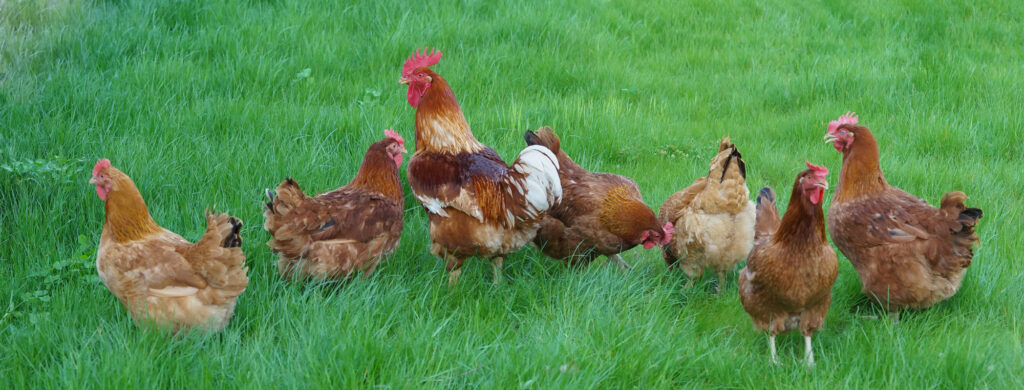
Egg Laying and Meat Production
Other than their friendly dispositions, this girl really stands out as a dual-purpose hen. According to Cackle Hatchery, a New Hampshire hen lays the same amount of eggs (on average) as a Rhode Island Red. Here I go again, comparing the two — but it’s hard not to.
The reason the egg-laying ability, of 200 to 280 brown eggs per year, is notable is that they are a fast-growing variety that is appealing for meat production as well. Being a good layer that also displays rapid growth makes them an amazing dual-purpose breed.
To be fair to the comparison breed (Rhode Island Reds), they end up weighing about the same. The takeaway is that New Hampshire chickens mature faster and that’s important when you consider the cost of raising a chicken for meat. Every pound of feed makes the end result, dinner, more expensive.
Are New Hampshire Chickens Hardy?
Yes siree Bob, they sure are. They tolerate cold weather early on due to their fast feathering feature and are full of vigor and vitality. They are great for both new and old backyard chicken keepers regardless of their climate (within reason, of course).
The only caution, as with all single-comb breeds, is to beware of the potential frostbite of the comb.
How to Care For New Hampshire Chickens
- Protect them from an overload of parasites (look here for some of my favorite ways)
- Provide plenty of fresh, clean water (give them warm water in the winter)
- Feed your feathered friends a high quality feed
- Be sure they are protected from the elements and predators with a good, sturdy coop
- Let them free range if possible (it’s good for their diet and saves on feed)
- Buy their love ♥️ with protein-packed treats (it’s a win-win proposition)
Summary
So, what do you think? Do you want to help a breed that is falling by the wayside, that has been overshadowed by another similar breed? Do you want a friendly, fast growing, dual-purpose chicken that is hardy? If so, this breed might be worth looking into.

A happy wife, mother, teacher, writer, hobby farmer, lover of chickens, and contributor to Pampered Chicken Mama!

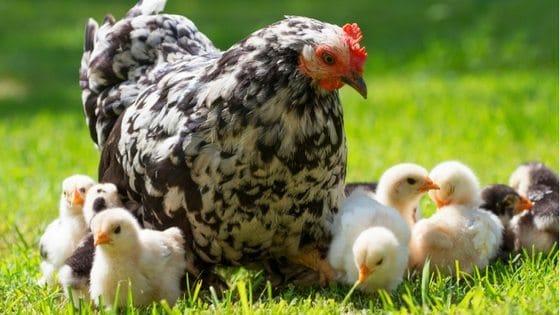
![What To Do In Your Coop In May! [Checklist]](https://thefrugalchicken.com/wp-content/uploads/2018/05/what-to-do-in-your-coop-in-May.jpg)
